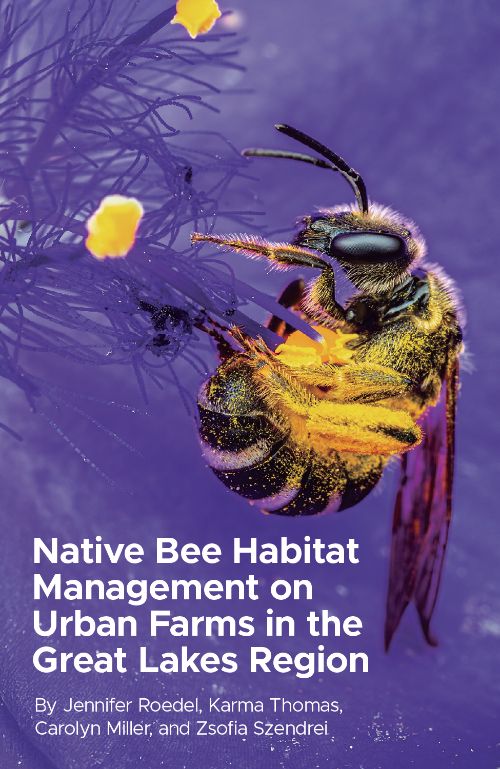New pollination management resource for urban growers in the Great Lakes region
A free pocket guide to help growers create and maintain native plant habitat to boost crop pollination by native bees is available through Michigan State University Extension.

The Great Lakes region is a hub for urban agriculture, with approximately 2,200 farms and gardens in Detroit, Michigan alone. These agricultural spaces play an important role in providing communities with fresh, locally grown food, many of which can be dependent on insect pollination. Previous work from the Michigan State University Vegetable Entomology Lab has shown that urban farms can host abundant and diverse crop-pollinating bee communities. Improving on-farm habitat provides conservation value while subsequently boosting pollination services and crop yields for many commonly grown fruits and vegetables.
A new guide, “Native Bee Habitat Management on Urban Farms in the Great Lakes Region,” was developed by Michigan State University Extension to help urban growers implement and manage pollinator habitat, focusing on native perennial, herbaceous plants. It includes profiles for 40 native plant species, each being well adapted to urban environments and attractive to common crop-pollinating bees. We detail species-specific growing conditions and potential marketability (cut flower, culinary, medicinal) so that growers can make informed decisions when selecting plants for their habitat. Steps for establishing native wildflower plantings and seasonal habitat maintenance are also described.
This resource also includes descriptions, seasonal activity, nesting preferences, diet and crops pollinated for 17 genera of bees that are both common throughout cities of the Great Lakes region and recognized as important pollinators of popular fruits and vegetables. Notable species are shown with their regional conservation status and other pertinent ecological information. High-quality photographs, largely provided by professional photographer Joseph Ferraro, are featured to aid in field recognition.
Download Native Bee Habitat Management on Urban Farms in the Great Lakes Region
Most of the information in this guide was specifically requested by local urban growers serving on our project’s advisory board like Magnolia Ave Farms, Sanctuary Farms, Urban Youth Agriculture and Cadillac Urban Gardens. Only a limited number of hard copies will be distributed to growers and agricultural educators in the region. To support a broader audience of growers, this guide has been translated into a Spanish PDF by food systems organizer Micah Orieta from Syracuse-Onondaga Food Systems Alliance in New York. This will soon be available through Michigan State University Extension, so stay tuned!
This work comes from the Bee Urban Growers (BUG) Project and is supported by the NC-SARE award LNC23-489 and NC-IPM award 2022-70006-38001.



 Print
Print Email
Email